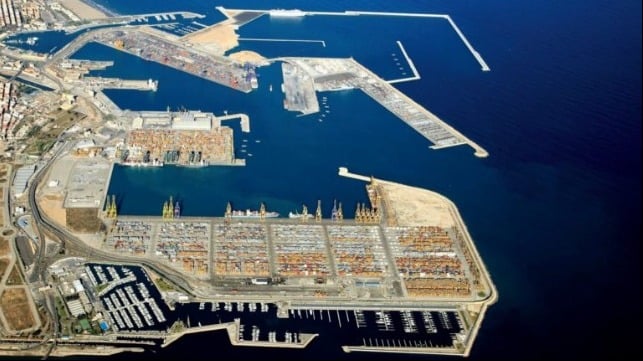Valencia Port Anchors Future Growth on New Strategic Plan

The Port of Valencia on Spain’s east coast has embarked on a mission to strengthen its position as a leading port hub in the Mediterranean with the development of a transformative long term strategic plan that encompasses energy transition and decarbonization. The Port Authority of Valencia (PAV) has put out tenders looking for technical assistance for the preparation of the Valenciaport 2030 strategic plan whose overall objective is to prepare its port facilities to meet the modern maritime transport challenges and to renew the port's roadmap to ensure their competitiveness and contribution to prosperity and social welfare.
The plan will have five axes namely new business opportunities and technological development, energy transition, decarbonization and the fight against climate change, digital transformation, innovation and the port-city relationship. While the plan, will have a 2030 horizon, it will also be completed with a longer-term vision up to 2050. They are also foresee a possible mid-term review in 2025.
It will include a joint strategic proposal for Valenciaport and for each of the ports dependent on the PAV namely the Port of Valencia, the Port of Sagunto, and the Port of Gandia, taking into account the singularities and roles of each of them as commercial port, logistic and industrial port and city port.
“This is a key document for defining and setting Valenciaport’s objectives for the coming years to strengthen its position as a leading port hub in the Mediterranean,” said PAV.
Preparation of the plan comes when Valenciaport is recording a recovery in performance as global trade rebounds from downturns brought about by the COVID-19 pandemic.
During the first half of the year, the port’s freight traffic amounted to 42.6 million tons, representing an increase of 13 percent compared to the same period last year. Over the period, the port handled a total of 2.8 million TEUs, 11.6 percent more than in 2020. China remained as the port’s leading trading partner during the period with 303,124 full containers, 27 percent more than in 2020.
By coming up with a new strategic plan, Valenciaport is responding to important technological, economic and social changes that are influencing maritime-port activity. The changes cut across geopolitics that are influencing shifts in world trade patterns, the climate crisis that is forcing a shift in energy models, technological advances arising from digitization, industry alliance policies and their vertical integration, and greater public demands for participation in maritime decisions.
“In this context, a new strategic reflection is needed to redefine the mission and vision of the PAV as a whole and of each of its ports in particular, with a horizon up to 2030, in order to face these challenges,” noted PAV. It added that the plan will include a new point to be assessed on traffic forecasts, including the evolution of containers, for the three ports managed by the PAV.
The plan will also be aligned with the U.N. Sustainable Development Goals and the Green Pact of the European Union and with the framework of the port system being designed by Puertos del Estado. The deadline for submitting tenders will end in October.
